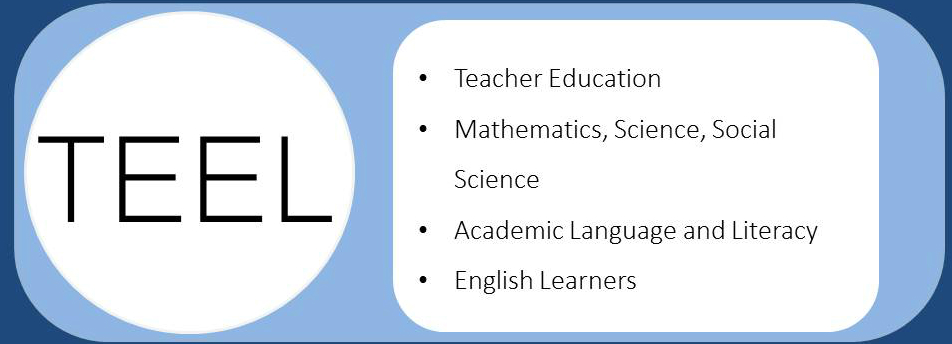Scientific sense-making through scientific/engineering practices. Scientific sense-making refers to how students transition from everyday to scientific ways of knowing, including knowing the nature and practices of science, via engagement in scientific/engineering practices. Scientific sense-making is enhanced when teachers make explicit to students what they are to be learning (i.e., a “big idea”), make connections between the big idea and classroom activity and prior knowledge (August & Hakuta, 1997; Garcia & Kleifgen, Tellez & Waxman, 2004), and make students aware of how they will demonstrate mastery of the big idea (i.e., the learning objective) (Wiggins & McTighe, 1998). Students can better relate to the big idea when it is couched within a puzzling problem, ill-defined question, and/or model-based inquiry (e.g. student development, refinement, and/or use of models) (NRC, 2012; Reiser, Krajcik, Moje, & Marx, 2003; Passmore & Stewart, 2002). Expectations and classroom rigor for ELLs are maintained through deliberate and sustained scaffolding, (Walqui & van Lier, 2010), which may include modeling of instruction, graphic organizers, visual representations, realia, and use of technology.
Scientific discourse through scientific/engineering practices. Developing a coherent understanding of science requires that students learn how science knowledge is constructed, presented, and shared through specialized scientific oral and written language forms – i.e., the discourse of science (Graham & Perin, 2007; Pearson, Moje, and Greenleaf, 2010; Snow, 2010; Veel, 1997). This can happen through engagement with scientific/engineering practices, where students are exposed to more complex ways to use language, such as constructing and communicating scientific explanations and arguments, as well as engineering solutions. These forms of discourse promote conceptual understanding, investigative competence, and understanding the epistemology and social nature of science (Driver et al, 2000). Scientific discourse is, in itself, a social and collaborative practice which can help students make sense of both science concepts and develop language (Lemke, 1990; Ovando & Combs, 2012).
English language and disciplinary language development. Scientific genres are characterized by dense clauses, technical and general academic vocabulary, and the use of the passive voice. In order to become independent consumers and producers of science knowledge, students need to be able to both comprehend and use scientific discourses, with attention not only to technical science vocabulary, but also general academic words and English language structures commonly used in science (August, Carlo, Dressler, & Snow, 2005; Snow, 2010). In secondary schools, however, all students, particularly ELLs, face both an increasing complexity of language genres and registers associated with disciplinary reading, writing, speaking, and listening (Scarcella, 2003) and a decrease in authentic content learning opportunities (Bruna & Gomez, 2010). ELL students can engage in authentic literacy practices that promote both content learning (e.g. core science ideas) and language & literacy development (Krajcik & Sutherland, 2010; Pearson, Moje, & Greenleaf, 2010). Research on the integration of literacy development and science learning for ELLs has demonstrated that targeted comprehension, composition, and vocabulary development strategies can support ELLs in understanding and communicating complex science concepts (Rodriguez, 2010). Some of these include reciprocal teaching (Palinscar & Brown, 1984), annotation and summarization (Herman, Perkins, Hansen, & Gomez, 2010), interactive science notebooks and writing heuristics as well as non-traditional writing activities, e.g., blog entries, letters, stories, etc. (Hand, et al., 1999; McDermott, 2010; Wallace, Hand, & Prain, 2004; Weiss-Magasic, 2012), and a focus on process-oriented writing skills (Graham & Perin, 2007; Olsen, et al., 2010). Vocabulary development can be supported through word walls, facilitating word consciousness/analysis, providing multiple exposure to and opportunities to use new words, etc. (August, Carlo, Dressner, & Snow, 2005).
Contextualized Science Activity. Finally, a key aspect of any equity agenda is the engagement of cultural and linguistic minority students in classroom learning experiences that are not only rigorous, but also meaningful and relevant. Teachers and schools have often positioned underserved ELL students as deficient and in need of remediation prior to engaging in rigorous coursework often setting students up for failure before they even step foot into a secondary science classroom (Oakes, et al., 2004; Rodriguez, 1998; Valenzuela, 1999). Teachers must both understand that ELLs are quite capable of grappling with authentic and contextualized real-world problems that enhance both language development and conceptual understandings, and provide opportunities for them to do so (Bouillon & Gomez, 2001; Moll et al, 1992; Lee & Luykx, 2006; Quinn, Lee, & Valdés, 2012; Valenzuela, 1999). By engaging students in science investigations and engineering design problems in authentic real-world problems, teachers can leverage students’ funds of knowledge from their homes and communities, the local physical (e.g., school building, community center, etc.) or ecological environment (local stream, watershed issues, etc.), and/or socioscientific issues (e.g., stem cell research, sustainability science), as a way to engage ELL students in meaningful and rigorous science learning experiences. Contextualized science activity, then, is the entry point (see the “doorway” in Figure 1) through which ELLs can come to understand relationship between school science learning and their lived experiences outside of schools.
